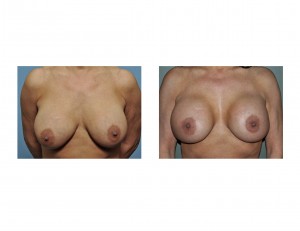Background:Breast augmentation is entering its fifth decade of human use. In fact, the first breast augmentation patient is still alive and is 82 years old. Over that time, much has been learned about the procedure and the implants themselves have undergone a lot of design and structural changes. With each passing decade of use, breast augmentation continues to be an improved and more predictable procedure.
But at the heart of breast enhancement is the implant. The procedure is not possible (with the exception of fat injection breast augmentation which is still in its infancy and is but for a limited number of women) without the implant and both its immediate and long-term success depends on it. But breast implants are not forever. These are medical devices with limited lifespans. While there is the euphoria of the initial operation and the immediate change, the future reality is that one will eventually be having more surgery to replaced a failed or failing breast implant. Best estimates place that occurrence of somewhere between 10 and 20 years, on average, after the initial implantation.
But even when the implant does not fail, most breasts will still undergo some physical changes in appearance and shape. Just like the breast that does not have an implant, time and gravity work to pull the breast downward.While an implant does provide support and helps keep the breast tissue higher on the chest wall over time, some women will still develop sagging of their breasts off of the implant. I have seen lots of women who are now 15 to 20 years after their breast augmentation (without failed implants) and I have been amazed at how much breast sagging that they have developed. While this is not true for all implanted women, it seems to be particularly for those women who have gained a lot of weight over the years.
While an implant pushes outward on the breast tissue, how long it will be supported in an upright and sometimes uplifted position depends on numerous factors.A major factor is the quantity of breast tissue one has to start with or acquires over time. The more tissue that sits in front of the implant will have a definitive tendency to fall or sag 10 to 20 years later.

Under general anesthesia, she had her original implants removed which were silicone and 350cc in size. One implant was intact and the other implant had a small tear in the implant shell with limited extrusion of the silicone material. She did have thick and hardened capsules but with minimal calcifications. Her implants were replaced with 550cc high profile silicone gel breast implants.


Case Highlights:
· Due to age and gravity, the implanted breast will lose shape and position over time Usually the breast tissue that sat in front of the implant goes south.
· Most women will undergo elective or forced replacement of their implants due to failure after 15 to 20 years of implantation.
· To restore breast volume or shape with implant replacement, a larger implant size is needed.
Dr. Barry Eppley
Indianapolis, Indiana


